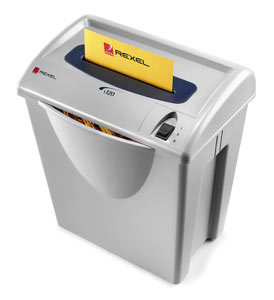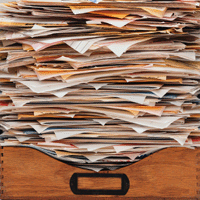Shredding is great fun but not if you shred the wrong documents. Here’s your guide:
Monthly
Credit card receipts after reconciliation with the credit card statement. Don’t shred receipts needed for tax purses or warranties. Attach those receipts to either the user manual or the warranty.
Shred cancelled checks and debit receipts [again excepting those needed for taxes or warranties. My bank has a picture, front and back of all my checks, so a paper copy, mailed by the bank is redundant.]
Yearly Shred
• Monthly retirement and investment account statements after they are reconciled with their year end statement.
• The monthly bank statement IF you have reconciled with the year end statement.
• Pay stubs after reconciliation with W-2s, 1099s or equivalents, the IRS has their own copy!
• Repeating monthly bill. Check it against last year’s to see that there is not some freak leak. [My utility company gives me a usage graph this year and last year, so I don’t need to do this comparison and I can just shred last years statement.]
After 7 or 10 years:
• Year end bank statements [if not needed for tax purposes]
• Any titles, deeds, or surveys to any cars and/or property not owned for 7 years.
NEVER SHRED
• Certificates of birth, divorce, death.
• Military service records [I have been hearing a horror story of a retired serviceman who is trying to get disability, only to have the Army “losing” his records….]
• Wills and Trusts, revocable and non revocable
• Power of Attorney documents
• Social Security reports
• Year- end retirement statements and policies
• Loans and mortgage paid-in-full docs
• Diplomas and transcripts
• Medical records
* Current resume
• Evaluation and receipts of valuables [art, silver, jewels]
Many of these documents really belong out of the home. A Safe deposit box is good. But make sure someone else who you trust is also on the safe deposit list and has a key. Why? If something happens to you, you die or are incapacitated, they can get whatever is needed.
Next up: Organize what you have and lose even MORE paper!

 I have too much paper. I think I need to keep it….ALL? No, truth is, I don’t need much of it PERIOD. But how to do it so I don’t start screaming when I tossed the wrong thing? Here’s my guidance – a first pass if you will – because I, and possibly you, need an effective system to thin the flotsam from the jetsam.
I have too much paper. I think I need to keep it….ALL? No, truth is, I don’t need much of it PERIOD. But how to do it so I don’t start screaming when I tossed the wrong thing? Here’s my guidance – a first pass if you will – because I, and possibly you, need an effective system to thin the flotsam from the jetsam.